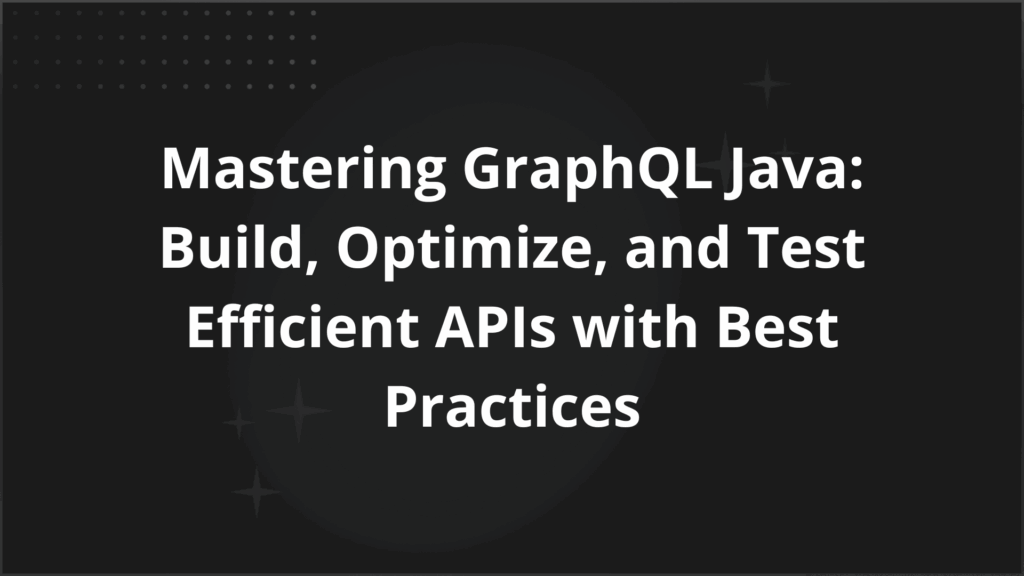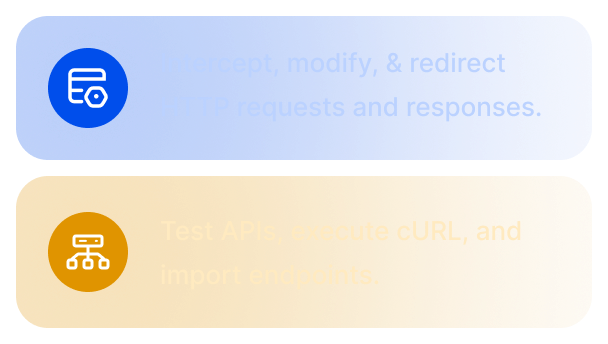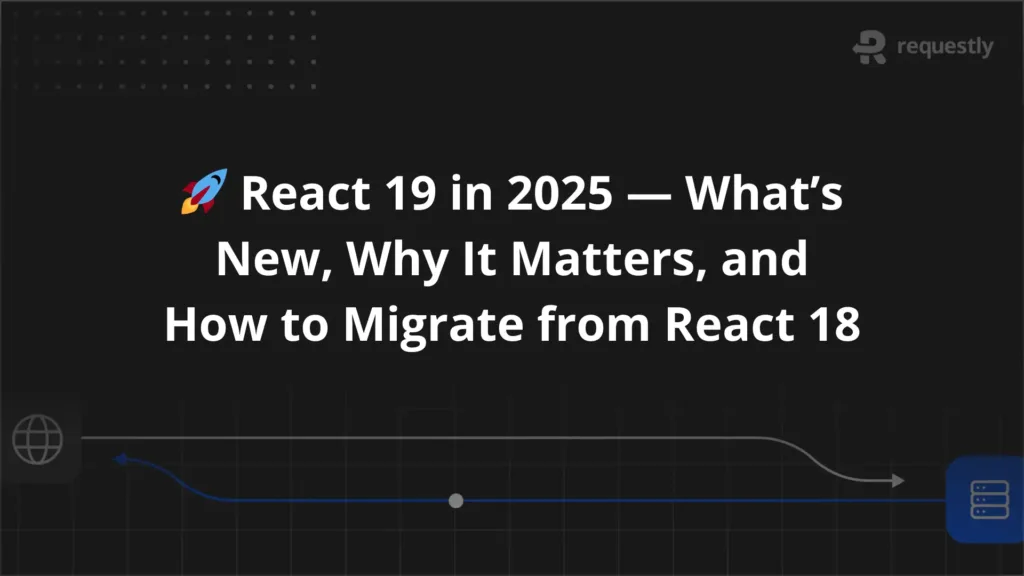Mastering GraphQL Java: Build, Optimize, and Test Efficient APIs with Best Practices


GraphQL offers a flexible and efficient way to build APIs by allowing clients to request exactly the data they need. In the Java ecosystem, graphql-java and related frameworks provide powerful tools to create scalable GraphQL services.
This article covers the essentials of GraphQL Java, from setup to building your first API, along with tips for optimizing performance.
Understanding GraphQL Java
GraphQL Java is the most popular Java implementation of GraphQL, enabling developers to build flexible and efficient APIs using the GraphQL query language. At its core, GraphQL Java allows you to define a schema that describes the types of data that clients can query and mutate. This schema acts as a contract between the client and server, specifying what data is accessible and how it is structured.
GraphQL Java supports a variety of operations, including queries for reading data, mutations for writing or modifying data, and subscriptions for real-time updates. Its statically typed schema ensures that clients can validate queries before execution, resulting in predictable responses.
Key Features of GraphQL Java
- Supports schema definition using Schema Definition Language (SDL) or programmatic Java code.
- Uses DataFetchers to resolve fields and fetch the necessary data dynamically.
- Supports queries, mutations, and subscriptions for real-time data updates.
- Provides a type system with Scalars, Objects, Interfaces, Unions, Enums, and Input types.
- Allows custom scalars and directives for extended functionality.
- Integrates well with Java frameworks like Spring Boot for simplified development.
- Enables efficient data fetching with support for batching and caching to tackle the N+1 query problem.
- Supports runtime type resolution for polymorphic types (interfaces and unions).
- Provides built-in validation and error handling mechanisms.
- Allows flexible wiring of schema to backend code for customizable API logic.
These features make GraphQL Java a powerful and flexible solution for building scalable and modern GraphQL APIs in Java applications.
Setting Up GraphQL Java
Setting up GraphQL Java in your project is straightforward and can be done using popular build tools like Maven or Gradl. Here is a brief overview of the process:
1. Prerequisites; Ensure you have Java 8 or higher installed along with your preferred IDE (e.g., IntelliJ IDEA or Eclipse).
2. Add Dependencies: Include the graphql-java library in your project’s build configuration
For Maven:
<dependency>
<groupId>com.graphql-java</groupId>
<artifactId>graphql-java</artifactId>
<version>20.0</version>
</dependency>
For Gradle:
implementation 'com.graphql-java:graphql-java:20.0'
3. Project Structure: Organize your project to separate schema definitions (SDL files) and runtime wiring (Java classes for data fetchers and resolvers).
4. Schema Definition: Create your GraphQL schema using the Schema Definition Language (SDL) in a .graphqls file.
5. Runtime Wiring: Implement DataFetcher interfaces and wire them to the schema fields using RuntimeWiring.
6. Build and Run: Compile your project and set up a simple service to execute GraphQL queries against your schema.
For Spring Boot projects, you can use Spring for GraphQL which integrates graphql-java and handles much of the setup automatically, further simplifying the development process.
Building Your First GraphQL API with Java
Building a GraphQL API with Java involves defining a clear schema and connecting it to backend logic through resolvers known as DataFetchers. Follow these key steps to create your first GraphQL API:
1. Define the Schema: Create a .graphqls file that describes your API’s types, queries, and mutations using the Schema Definition Language (SDL). For example:
type Query {
hello: String
}
2. Implement DataFetchers: Write Java classes or lambdas to fetch data for each field defined in the schema. For the example schema, a simple DataFetcher for the hello query could return a greeting string.
3. Wire Schema to Code: Use RuntimeWiring to connect your DataFetchers to the schema fields:
RuntimeWiring.newRuntimeWiring()
.type("Query", builder -> builder.dataFetcher("hello", env -> "Hello, GraphQL!"))
.build();
4. Build Executable Schema: Parse the SDL file and combine it with the runtime wiring using GraphQLSchema to create an executable schema.
5. Create GraphQL Instance: Instantiate the GraphQL engine with the executable schema, enabling you to execute queries programmatically.
6. Execute Queries: Use the GraphQL instance to run queries, which return results in a structured format.
This simple “Hello World” API can be expanded by adding more types, queries, mutations, and integrating with databases or services for dynamic data retrieval.
By following this process, Java developers can quickly build and test GraphQL APIs tailored to their application needs.
Performance Optimization and Best Practices
Optimizing the performance of your GraphQL Java API is essential to ensure fast, efficient, and scalable data retrieval. Here are key strategies and best practices to enhance your GraphQL API’s performance:
- Efficient Resolver Design: Implement field-level resolvers that fetch only necessary data, avoiding excessive or unnecessary database queries.
- Caching: Employ caching mechanisms at various levels such as query result caching on the server or client side to speed up repeated queries.
- Pagination: Implement pagination for large data sets to limit the amount of data returned in a single request and reduce server load.
- Query Complexity Limiting: Set limits on query depth and complexity to prevent overly expensive queries from impacting performance.
- Schema Optimization: Design your schema thoughtfully by trimming unused fields and types, and leveraging directives like @defer to load non-critical data asynchronously.
- Monitoring and Logging: Regularly monitor query performance, track slow queries, and log execution times to identify and fix bottlenecks early.
- Security Considerations: Secure your API by restricting unauthorized access and validating queries to protect against malicious or expensive requests.
By following these best practices, developers can build robust GraphQL Java APIs that deliver fast response times and offer a smooth user experience.
Enhance API Testing and Debugging with Requestly HTTP Interceptor
Requestly by BrowserStack offers HTTP Interceptor, which is designed to simplify API testing and debugging by allowing real-time interception, modification, and monitoring of HTTP and GraphQL requests directly in your browser. For Java developers working with GraphQL APIs, Requestly offers several benefits:
- Intercept and Modify Requests: Dynamically change request headers, query parameters, or body payloads without altering your backend code.
- Mock Responses: Simulate different server responses to test how your GraphQL API handles various scenarios, including errors and latency.
- Debug GraphQL Queries: Inspect incoming and outgoing GraphQL requests to identify performance issues, unexpected behavior, or data mismatches.
- Simplify Frontend-Backend Development: Work independently of backend availability by mocking APIs during frontend development.
- No Complex Setup: Being a browser extension, Requestly requires no proxy or server configuration, making it easy to integrate into any development workflow.
By integrating Requestly HTTP Interceptor into your development process, you can accelerate debugging, enhance testing accuracy, and ensure your GraphQL Java APIs perform reliably under diverse conditions.
Conclusion
GraphQL Java offers a powerful and flexible framework for building modern APIs that provide precise, efficient data access. By understanding its core features, setting up a robust schema, and implementing effective query resolvers, developers can create scalable and maintainable GraphQL services in Java.
Optimizing performance with techniques like batching, caching, and query complexity limitation ensures smooth and fast API responses. Furthermore, enhancing testing and debugging workflows using tools like Requestly HTTP Interceptor helps developers catch issues early and streamline development cycles.
With best practices in place, GraphQL Java empowers teams to build APIs that are not only performant but also developer-friendly, making it an excellent choice for next-generation application development.

Contents
Subscribe for latest updates
Share this article
Related posts






















